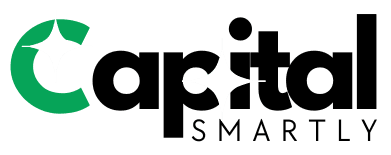advertisement
Over 60% of Canadian homeowners have refinanced their mortgages recently. Loan refinancing helps lower interest rates, consolidate debt, or access home equity. This guide explores refinancing options, including LendDirect and Mogo, and helps you decide when to refinance.
Refinancing can be a powerful financial tool. It’s crucial to understand the process and potential risks. This article will help you make an informed decision about refinancing.
We’ll cover mortgage, personal loan, and auto loan refinancing. You’ll learn how loan refinancing can benefit you as a Canadian consumer.
Understanding Loan Refinancing in Canada
Loan refinancing helps Canadians improve their finances. It replaces an existing loan with a new one. The goals often include lower interest rates, cash out refinance options, or better credit score impact.
What is Loan Refinancing?
Loan refinancing swaps an existing loan for a new one. The new loan usually has different terms and conditions. This can mean changes in interest rates, loan duration, or lender.
The main aim is to get better terms. These should match the borrower’s current financial situation and goals.
Benefits of Refinancing
- Potentially lower interest rates, leading to reduced monthly payments and overall interest costs
- The ability to access cash out refinance options, allowing borrowers to tap into their home’s equity for various purposes
- Improved credit score impact through debt consolidation or by replacing high-interest loans with more favorable ones
- Flexibility to adjust loan terms, such as the repayment period, to better suit the borrower’s needs
How Refinancing Works
Refinancing starts with applying for a new loan. The lender checks the borrower’s credit, income, and asset value. If approved, the new loan pays off the old one.
This process may have closing costs. These should be part of your cost-benefit analysis.
“Refinancing can be a powerful tool to improve your financial situation, but it’s important to carefully consider the costs and benefits before making a decision.”

When to Consider Refinancing Your Loan
Refinancing your loan can be a smart financial move. Timing is key. Before exploring options, evaluate your current financial situation to determine the right time.
Evaluating Your Current Financial Situation
Start by examining your financial standing. Look at your current interest rate, loan term, and monthly payments. Consider your overall debt load too.
Understanding your financial landscape helps assess if refinancing could lead to savings. It can also show if better terms are possible.
Timing the Market: When is Best to Refinance?
Refinancing is often best when interest rates are low. Watch market trends and home equity loans. This helps identify the best time to refinance and maximize savings.
Think about how long you’ll stay in your home or keep the loan. Shorter-term plans may make refinancing less beneficial.
Signs You Should Refinance
- Your current interest rate is substantially higher than the prevailing market rates.
- You’re looking to shorten your loan term and pay off the debt faster.
- You need to access the equity in your home for a major purchase or investment.
- Your financial situation has improved, allowing you to qualify for better loan terms.
Refinancing can optimize your loan, but careful evaluation is crucial. Consider your specific circumstances and market conditions. This helps you make an informed decision aligned with your long-term financial goals.
Types of Loans Eligible for Refinancing
Loan refinancing in Canada offers several options for borrowers. Understanding these options is key to making smart financial decisions. Let’s look at the main loan types you can refinance.
Personal Loans
Personal loans can be refinanced to get better terms. This might mean lower interest rates or adjusted repayment terms. Refinancing can also help consolidate multiple debts into one manageable loan.
Mortgages
Mortgage refinancing is a popular choice for Canadian homeowners. It can lower monthly payments or let you tap into home equity. You might also switch from a variable-rate to a fixed-rate mortgage.
This option works well if you’ve built equity or if market rates have dropped. Always compare your current terms with new offers before deciding.
Auto Loans
Loan refinancing Canada includes options for auto loans too. You could lower your interest rate or extend your repayment period. Some people even combine multiple car loans into one payment.
This can be helpful if your credit score has improved since getting the original loan. It’s also useful if your financial situation has changed for the better.
Before refinancing any loan, carefully weigh the pros and cons. Consider both short-term benefits and long-term effects. This will help you make the best choice for your financial future.
Popular Loan Refinancing Options in Canada
Canadians have access to various reliable lenders for loan refinancing. LendDirect and Mogo are leading players in this market. They offer unique features to help borrowers refinance their loans and secure lower interest rates.
LendDirect: Features and Benefits
LendDirect is a respected online lending platform for personal loan refinancing. It focuses on transparency and customer satisfaction. The lender offers a streamlined application process and competitive interest rates.
LendDirect’s refinance requirements are straightforward. This makes it accessible to many borrowers.
Mogo: Innovative Solutions for Borrowers
Mogo, a fintech company, is a trailblazer in Canadian loan refinancing. It’s known for its user-friendly mobile app and personalized approach. Mogo provides digital tools to help borrowers manage their finances.
Their services range from loan refinancing to credit monitoring. Mogo’s solutions cater to modern Canadian consumers’ unique needs.
Other Notable Lenders
Canadians have access to diverse lenders for loan refinancing. Each lender has its own features and benefits. Alternatives like Borrowell, Lendful, and Tinesha are worth exploring.
Understanding these loan refinancing providers helps Canadians make informed decisions. They can find solutions that align with their financial goals. Options include lower interest rates, flexible repayment terms, and personalized customer service.
How to Compare Lenders and Offers
Comparing lenders is key to getting the best loan refinancing deal in Canada. Consider interest rates, fees, and customer service when choosing a lender. These factors will help you find the right fit for your refinancing needs.
Interest Rates: What to Look For
Interest rates are crucial when refinancing. Seek lenders offering competitive refinance costs and lower interest rates. Compare Annual Percentage Rates (APR) across multiple lenders to find the best option.
Even a small difference in rates can greatly impact your loan’s overall cost. Make sure to do your homework before committing to a lender.
Fees and Costs Associated with Refinancing
Refinancing often includes various fees and costs. These may include application fees, origination fees, and closing costs. Review each lender’s fee structure carefully to understand the total refinancing cost.
Some lenders offer loan refinancing Canada options with lower fees. This can save you money in the long run, so be sure to compare.
Customer Service and Reputation
Consider the lender’s customer service level and overall reputation. Research reviews and ratings of potential lenders to ensure they have a positive track record.
A lender with strong reputation and responsive service can make refinancing smoother. This can lead to a better experience throughout the process.
Evaluate these key factors to make an informed decision. This will help you select the best lender for your loan refinancing Canada needs.
The Refinancing Process: Step-by-Step
Loan refinancing can be complex, but knowing the key steps makes it easier. The process involves several important stages. These stages help you achieve your financial goals.
Preparing Your Financial Documents
First, gather all necessary financial documents. This step is crucial for a smooth application process.
- Recent pay stubs or proof of income
- Tax returns from the past two years
- Statements for existing loans, credit cards, and bank accounts
- Proof of homeownership, such as a mortgage statement or property deed
Having these documents ready will speed up your application. It ensures a quick move to the next stage.
Submitting Your Application
Next, submit your refinancing application. You’ll provide information about your credit score and refinance requirements. Be ready to discuss your financial goals and reasons for refinancing.
Closing the Loan: What to Expect
The final step is the loan closing. You’ll review and sign the new loan agreement and related refinance costs. Your lender will help with the transition.
They’ll manage the payoff of your existing loan. If applicable, they’ll also handle the disbursement of cash proceeds.
The Impact of Credit Scores on Refinancing
Your credit score is vital when refinancing loans in Canada. It affects the interest rates and terms you’ll receive. Understanding credit scores is key to making smart refinancing choices.
Understanding Credit Scores in Canada
Canadian credit scores range from 300 to 900. Higher scores mean lower credit risk. Lenders use these scores to assess creditworthiness and lending risk.
Equifax and TransUnion are the main credit bureaus in Canada. They calculate scores using factors like payment history and credit utilization.
How Credit Scores Affect Your Rates
Lenders check your credit score when you apply to refinance. They use it to determine the credit score impact on interest rates.
Higher credit scores usually qualify for lower interest rates. Lower scores may lead to higher rates or refinancing denial. Lenders see high scores as a sign of lower default risk.
Tips to Improve Your Credit Score Before Refinancing
- Review your credit report and dispute any errors or inaccuracies.
- Pay all your bills on time, including credit card payments, loans, and utilities.
- Keep your credit card balances low compared to your credit limits.
- Avoid opening new credit accounts unnecessarily, as this can temporarily lower your score.
- Maintain a mix of different types of credit, such as credit cards, loans, and mortgages.
Improving your credit score before refinancing can boost your chances of success. You’ll be more likely to qualify for lower interest rates and better refinance requirements.
This approach can save you thousands of dollars over your loan’s lifetime. Take action now to improve your financial future.
Costs Associated with Loan Refinancing
Refinancing a loan can be a smart financial move. However, it’s crucial to understand the costs involved. These expenses can greatly affect whether refinancing is worth it for you.
Closing Costs Explained
Refinancing comes with various closing costs. These may include application fees, appraisal fees, and title insurance. The exact costs depend on your lender and loan type.
It’s important to factor these expenses into your budget. They can add up quickly and impact your overall savings from refinancing.
Prepayment Penalties: What to Know
Some lenders charge prepayment penalties if you pay off your loan early. These fees help lenders recover lost interest. Check your current loan terms for any prepayment penalties before refinancing.
Calculating the Overall Cost of Refinancing
To determine if refinancing is worth it, consider all expenses. This includes closing costs, prepayment penalties, and new loan terms. A refinance calculator can help you estimate these costs accurately.
Carefully evaluate refinance costs and understand the impact of a cash out refinance. This will help you make a decision that fits your financial goals.
Being aware of refinancing costs helps you make an informed choice. You can ensure a smooth transition to your new loan while meeting your financial objectives.
Tax Implications of Loan Refinancing
Refinancing loans in Canada can have important tax implications. Understanding these can help you make better financial decisions. Let’s explore the potential tax effects of refinancing various loans.
Are There Tax Benefits?
Loan refinancing in Canada can offer tax benefits. You may be able to deduct interest on your new loan. This could offset refinancing costs and save you money.
Understanding Interest Deductions
- For mortgage refinancing, the interest paid on the new loan may be tax-deductible, as long as the loan is used to purchase or improve your primary residence or a secondary property.
- When it comes to home equity loans or lines of credit, the interest may also be tax-deductible, but only if the funds are used for specific purposes, such as home improvements or to pay for eligible expenses.
- For personal loans or auto loans, the interest is generally not tax-deductible, unless the loan is used for business or investment purposes.
Consult a tax professional to understand your specific situation. They can help you maximize potential tax benefits from refinancing. Careful planning is key to making the most of your refinancing efforts.
Alternatives to Traditional Loan Refinancing
Traditional loan refinancing isn’t the only option for Canadians. Other financial solutions might better fit your needs. Let’s explore debt consolidation loans, home equity lines of credit, and peer-to-peer lending options.
Debt Consolidation Loans
Debt consolidation loans combine multiple debts into one payment. This can lead to lower interest rates and simpler monthly obligations. It’s a great way to get your finances back on track.
Home Equity Lines of Credit
Homeowners can use a home equity line of credit (HELOC) instead of refinancing. HELOCs tap into your home’s equity, giving you a revolving credit line. You can use this for debt consolidation, home improvements, or unexpected costs.
Peer-to-Peer Lending Options
Peer-to-peer (P2P) lending platforms connect borrowers with investors online. They offer loan refinancing and other financial solutions. P2P lending often has competitive rates and simpler application processes.
Consider your financial goals and current debt when exploring these options. Look at the unique features of each alternative. This will help you make a smart choice for your long-term financial health.

Risks Involved in Refinancing a Loan
Loan refinancing offers benefits, but it’s crucial to understand the potential risks. A key concern is the potential for higher debt. Extending the repayment period can increase the total interest paid over time.
Another important risk is default. Refinancing may lead to overextension, making it harder to keep up with payments. Failing to make payments can damage credit scores and result in legal action.
Strategies to Avoid Default Risks
To reduce refinancing risks in Canada, borrowers should carefully assess their finances. They need to ensure the new loan terms are manageable. Here are some strategies to avoid default risks:
- Thoroughly reviewing the refinance costs to ensure the overall savings justify the refinancing decision.
- Calculating the new monthly payments and ensuring they fit comfortably within the borrower’s budget.
- Considering the impact of the refinancing on their credit score and taking steps to maintain or improve their credit profile.
- Seeking professional advice from a financial advisor or lender to ensure the refinancing is the right choice for their specific circumstances.
Understanding refinancing risks helps borrowers make smart choices. They can align decisions with their financial goals and reduce the chance of defaulting. Careful planning is key to successful loan refinancing in Canada.
Final Thoughts on Loan Refinancing in Canada
Loan refinancing can boost your finances in Canada. It helps you save money and improve your borrowing. This applies to personal loans, mortgages, and auto loans.
Making an Informed Decision
Assess your finances before refinancing. Understand the process and compare lender offers carefully. Use online calculators to estimate savings.
Learn about refinance rules from lenders like LendDirect and Mogo. Smart choices can lower interest rates and monthly payments. This gives you more financial freedom.
Resources for Further Research
Learn more about loan refinancing from trusted online sources. Check government websites, finance blogs, and industry news. These provide insights on trends and rules.
A financial advisor can help with your specific situation. They can guide you to the best refinancing options for you.
FAQ
What is loan refinancing?
Loan refinancing replaces an existing loan with a new one. It often offers better terms like lower interest rates or different repayment schedules.
What are the benefits of refinancing a loan in Canada?
Refinancing in Canada can secure lower interest rates and reduce monthly payments. It may also shorten the loan term or provide access to cash-out options.
When is the best time to refinance a loan in Canada?
The best time to refinance is when interest rates drop. It’s also good when your credit score improves or your financial situation changes positively.
What types of loans can be refinanced in Canada?
In Canada, you can refinance personal loans, mortgages, and auto loans. These are the most common types for refinancing.
What are some popular loan refinancing options in Canada?
LendDirect and Mogo are popular refinancing options in Canada. They offer competitive interest rates and flexible refinancing solutions.
How do I compare different lenders and refinancing offers?
Compare interest rates, fees, and customer service when looking at lenders. Also, consider the lender’s reputation in the market.
What is the step-by-step process for refinancing a loan in Canada?
First, prepare your financial documents. Then, submit a refinancing application to your chosen lender. Finally, close the new loan, which may involve appraisals.
How do credit scores impact loan refinancing in Canada?
Credit scores greatly affect the interest rates and terms you qualify for. Improving your score before applying can help secure better loan conditions.
What are the costs associated with loan refinancing in Canada?
Refinancing typically involves closing costs, including application and appraisal fees. Calculate these costs to ensure refinancing is financially sound for you.
Are there any tax implications to consider when refinancing a loan in Canada?
Tax implications can arise when refinancing, especially for mortgages and home equity loans. Understand how interest deductions and other tax benefits apply to your situation.



